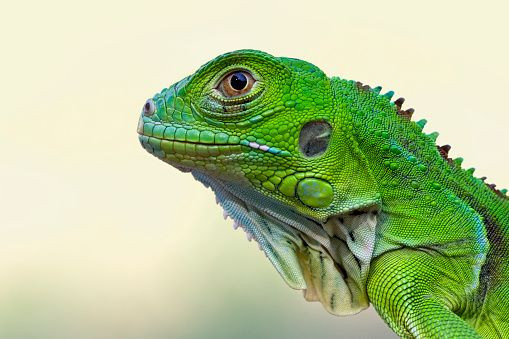Cold Weather Impact: Frozen Animals Falling From Trees, Washing Up On Shores

As the "Bomb Cyclone" sweeps across the Southeastern coast of the United States, temperatures are steadily declining causing some of the coldest temperatures seen in over 30 years. The freezing temperatures brought heavy winds and snow fall across several areas but in Florida, along with all the snow, there is something else seemingly falling from the skies.
As temperatures dropped below 40 degrees Fahrenheit in Florida, Iguanas started falling down. Iguanas usually roost on treetops at night. As temperatures dropped fast, these cold-blooded reptiles froze and fell to the ground immobilized.
After several images were uploaded by people on twitter of these green lizards that can reach up to 1.8 meters in length, officials have warned people not to pick them up or put them indoors.
Green iguanas, like all reptiles, are cold-blooded animals, so when the temperature falls to a certain level iguanas become immobile, said Kristen Sommers of the Florida Fish and Wildlife Conservation Commission in a Brisbane Times report. Under 50 degrees Fahrenheit, they become sluggish. Under 39.2 degrees Fahrenheit, their blood stops moving as much, Sommers said. Florida's average temperature in winter is around 64-69.8 degrees Fahrenheit.
These iguanas might seem immobile and lifeless but they are still alive. The state they are in is close to being comatose but once the temperature starts rising, they thaw out and start moving again.
This, however, is not true for all iguanas. These creatures are not native to Florida but spread there presumably for the almost year-long warm climate. As temperatures go down and their body shuts down, some of them handle it better than others.
Some of them start turning gray because of the lack of blood flow in their body, once they turn completely black, it is a sign they are dead.
The ones who survive this cold will mate later in their life and their progeny will be better suited to handling the cold. This could become a problem as these lizards could slowly start moving north as they become better at withstanding the cold.
Like the iguana, several other species were found frozen in large numbers in southern United States and near the Gulf of Mexico in Texas.
Conservationists in the Gulf of Mexico on Wednesday saved an estimated 500 hypothermic sea turtles. Reports were seen circulating the internet yesterday about hordes of what scientists call "cold stunned" sea turtles, and are mainly stuck in shallow waters near the Padre Islands.
Several hundred were rescued by the National Park Service and were kept indoors until they regained mobility. Like iguanas, sea turtles become "cold stunned" when the water drops below 50 degrees Fahrenheit. They are cold blooded and cannot regulate their body temperature.
When they become immobilized the turtle’s body functions shut down and they become immobilized. They float to the surface and can be easy prey, get struck by a boat, or have their eyes picked out by birds and bleed to death.
These turtles were revived, tagged, and sent to a rehabilitation facility to check for any damage to internal organs because of the decrease in oxygen.
Wildlife conservation experts warn citizens not pick up these frozen animals without any prior knowledge.
© Copyright IBTimes 2025. All rights reserved.





















